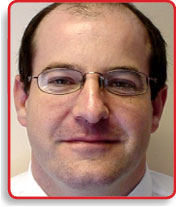 Richard Rose, child trauma intervention specialist and author of Life Story Therapy with Traumatized Children: A Model for Practice, shares some of his experiences of using life story work with traumatised children.
Richard Rose, child trauma intervention specialist and author of Life Story Therapy with Traumatized Children: A Model for Practice, shares some of his experiences of using life story work with traumatised children.
The unique concept of the life story approach is that it has a defined process:
The beginning (stage 1) requires the Therapeutic Worker to detect the past, to collate the stories of those around the child and to collect tangible items, such as first shoes, first books, cultural and religious material (e.g. Christening, Confirmation, Bar or Bat Mitzvah);
The middle (stage 2) provides the opportunity for the child to externalise their feelings and perceptions through a chronological process. To explore, challenge and conclude to the point that they can reframe their understanding and internalise their sense of self;
The end (stage 3) is the production of the book, the record of all that has been produced by the child, their carer and their Therapeutic Worker. The book becomes the history of the child and concludes with their hopes and desires for the future.
In short, all good stories have a beginning, middle and an end – therefore all narratives have a similar structure, time limited, focused and achievable. The child understands the sequence of discussion and can be helped to make sense of the past, present and plan for the future.
 This second book uses case studies to illustrate the various exercises available to the life story Therapeutic Worker. It also details case studies and tools that might be useful to all those working within the social care and education fields. Although the case studies are short, I hope that they illustrate how useful such activities prove to be in communicating with traumatised children. I have considered attachment and trauma, their effect on the brain and on the development of the child, and have used case examples to explore these crucial areas.
This second book uses case studies to illustrate the various exercises available to the life story Therapeutic Worker. It also details case studies and tools that might be useful to all those working within the social care and education fields. Although the case studies are short, I hope that they illustrate how useful such activities prove to be in communicating with traumatised children. I have considered attachment and trauma, their effect on the brain and on the development of the child, and have used case examples to explore these crucial areas.
One young person I worked with did not want to talk about the things that upset her. She was resistant to the idea of life story, but through the Jenga and Family Tree exercises (discussed more in my book), she was able to engage in play which required her to share information about her likes, dislikes, worries and hopes. By the third session, this young person stated, ‘I am ready now.’ From then on she produce thoughtful, insightful and distressing perceptions. As she talked these out – externalising them – she was able to illustrate her life and understanding on ‘wallpaper’ and, towards the end of the work, reframed her sense of self and internalised healthier thoughts of herself and those around her.
I also worked with an angry primary school child who had been hurt by everyone who had had previous ‘care’ of him. He was alert, poised and preoccupied with possibilities of hurt, either by me or his carer or by himself. There is still debate about re-traumatising children by visiting the past, and there is a possibility of this if the Therapeutic Worker is unsure, impatient, too patient, etc. By using memory boxes, fact/fiction/fantasy and heroism models, he was able to work through his anger and his pain. We used the Behaviour Tree to do the same by thinking about the source of his behaviour, the actions of those in his past and the consequences for those in his present and future.
I hope that by reading my new book, people will be able to use the examples of practice in their work with children. I trust that some readers will want to learn more about the positive outcomes for children who undertake life story, and how, if we can unlock the child’s past, we can release their potential for the future and help carers deal with the present. I am honored that Dr Bruce Perry has written a foreword to my book and have found his interest in my work both supportive and inspiring.
Copyright © Jessica Kingsley Publishers 2012.
Very interesting article! I haven’t been through this process exactly, but I have worked through my whole life over the last four years and written a book of that journey to try to understand my past and realise why I took so many problems mentally into my adult years. […] This book you have ‘Life story work with traumatized children’ sounds fantastic and very useful for parents who are in control and care for their children enough to make a difference and help them to overcome traumatic events 🙂